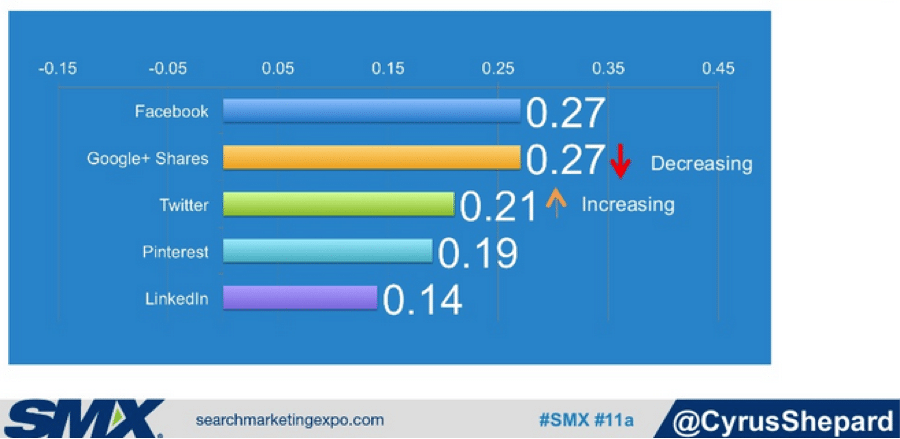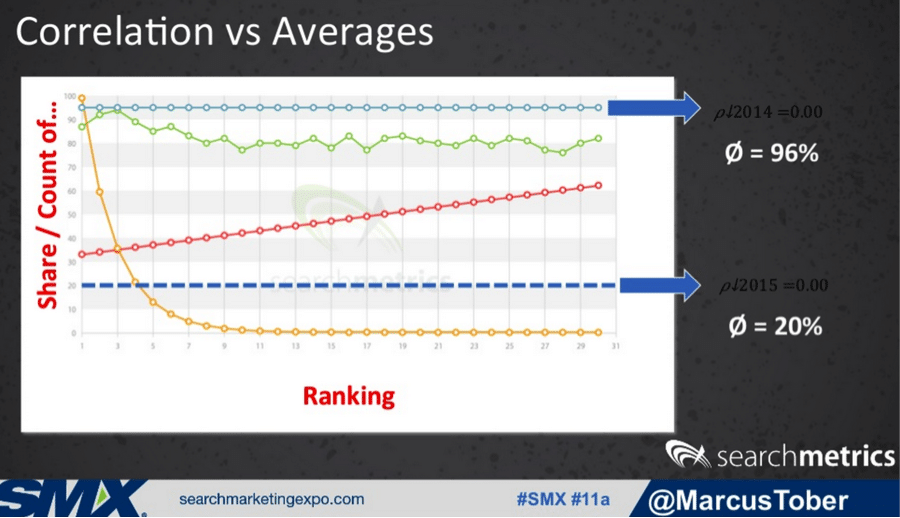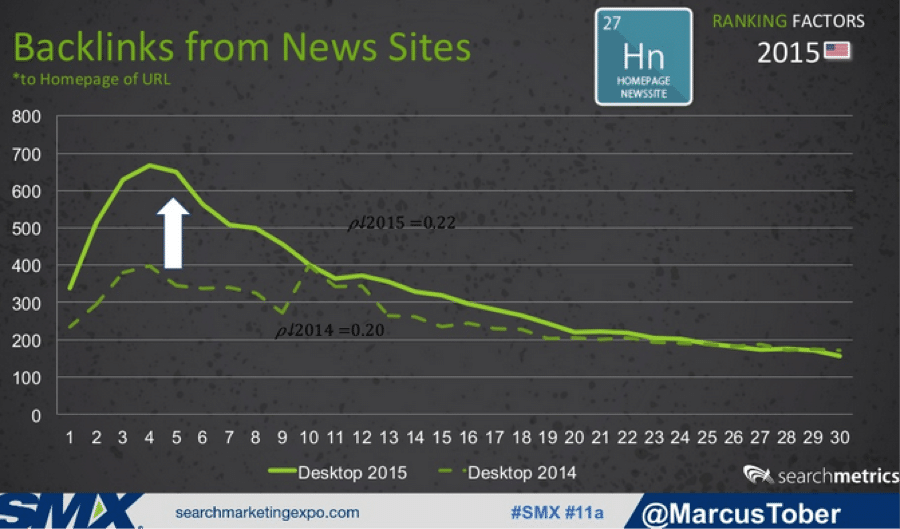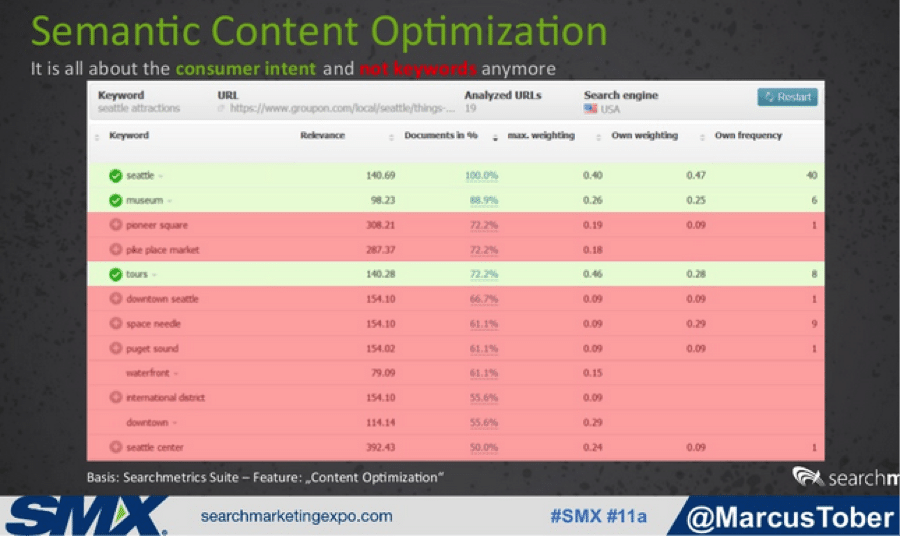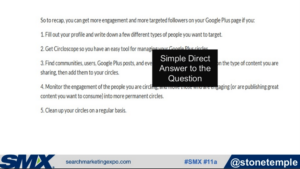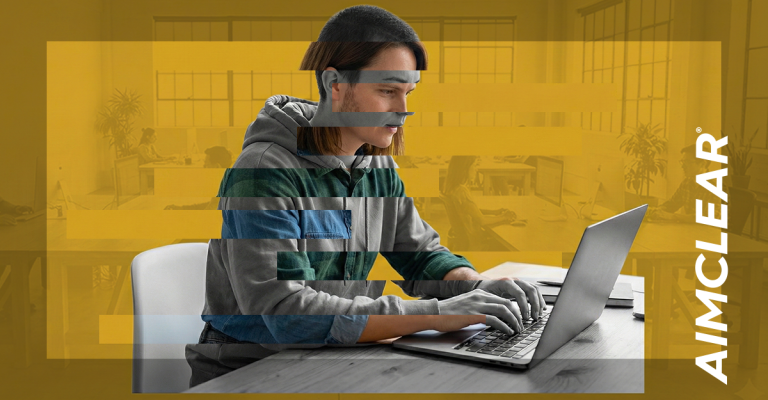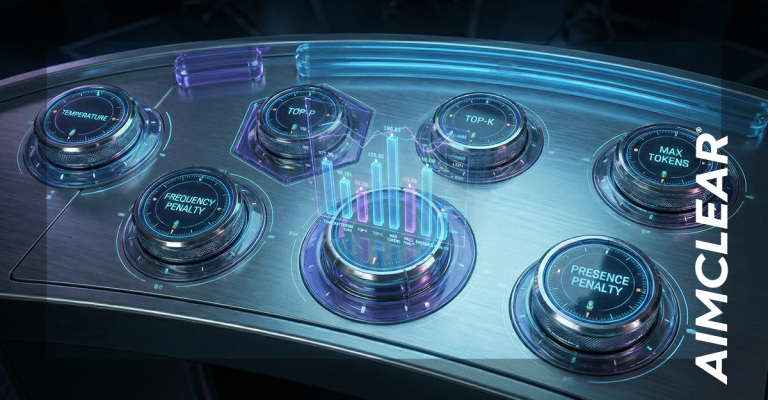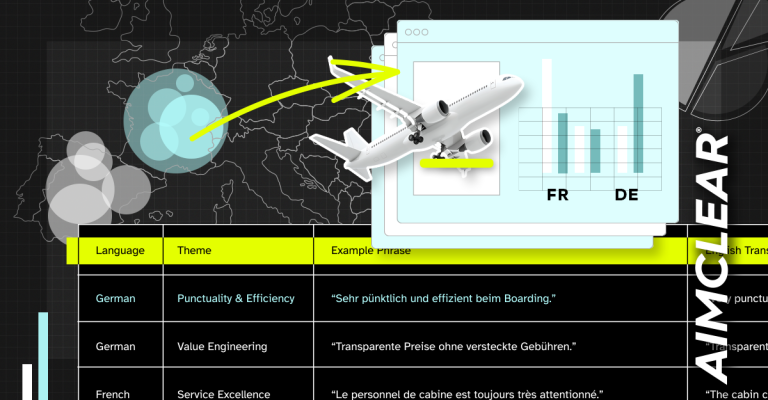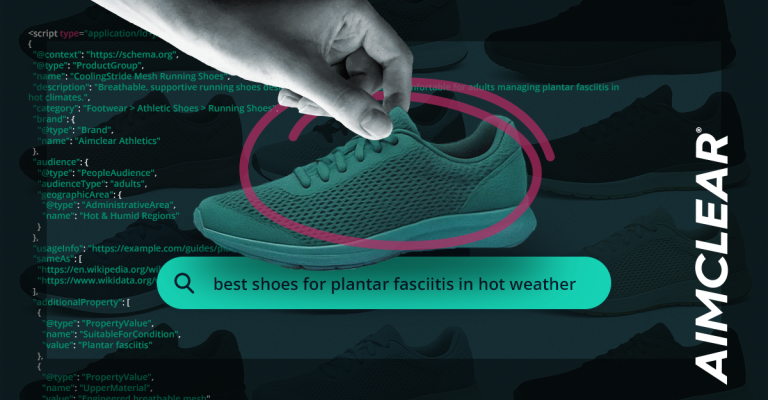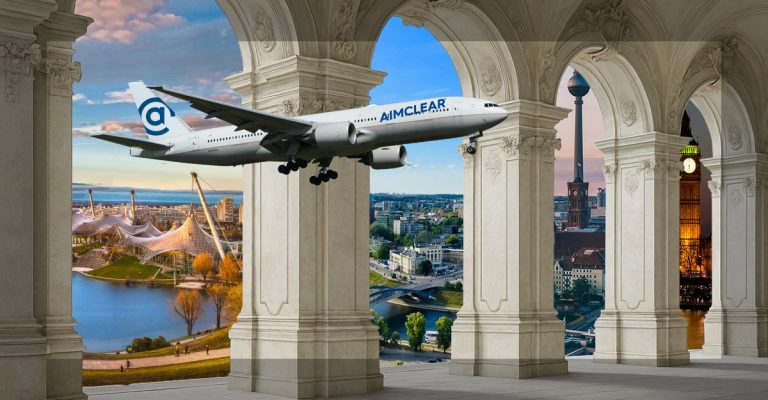How do I love thee, SMX Advanced? Let me count the ways. Freshly flung salmon to an expertly handcrafted cup of joe, Seattle offers an impeccable backdrop for two action-packed days of mind-bending SEO/SEM brain chow.
Each year attendees flock to the Periodic Table of SEO Ranking Factors panel ” and when you have three seasoned SEO data aficionados presenting their findings, theories, and updates to offer more clarity into which factors tip the scale in Google’s ranking algorithm, there really is no wonder it’s become a fan favorite.
2015 Panelists included:
- Cyrus Shepard: Director of Audience Development at Moz (@cyrusshepard)
- Marcus Tober: Founder/CTO of Searchmetrics Inc. (@marcustober)
- Eric Enge: CEO at Stone Temple Consulting (@stonetemple)
Panel moderator: Danny Sullivan, Founding Editor of Search Engine Land (@dannysullivan)
Ranking Correlation Study: Early Data by Cyrus Shepard
Every two years, Moz runs a ranking correlation study to better understand the relationship between search, features and rankings in Google search results. Correlation studies are the gold standard for SEOs to identify high-ranking factors, and hints that are important in SEO when trying to tease out what Google might be using as a ranking signal. Session attendees were lucky enough to get an early glimpse at this year’s discoveries that will be published in coming weeks.
This year’s methodology analyzes the top 50 Google results for about 15,000 keywords and 700,000 URLs.
TLDs. Are .com top-level domains associated with higher rankings? Sitting at a-0.01 correlation, data says there is no SEO advantage. But why is .org so high, you might ask? Wikipedia.
Links. We keep hearing “don’t worry about link building.” With a correlation of +0.30 (much higher than choosing your TLD), there appears to be an advantage with links. Shepard also noted that instead of decreasing through the years, correlation with links has actually risen. So for those wondering if they can rank without links, the answer is yes ” but data says that would be very hard, unless you’re trying to rank for non-competitive queries.
Anchor text. How important is it to have external anchor text? In terms of links coming from unique domains that contain partial match anchor text, it appears to be better to have variance in anchor text rather than exact.
Keyword In Title Tag. As SEOs, we look at things we can measure and control, and keyword in title tag is one of those. It actually represents a lower relationship in ranking (+0.08), which Shepard pointed out may be the result of difference in perception regarding how well this method works.
When looking at how sophisticated title tags are, we understand their importance to CTR. Just a reminder that data only tells us so much ” experience and knowledge should also play a role.
Social Sharing. Ever controversial, social sharing does appear to have a high correlation with ranking. However, Shepard noted this is likely not an actual ranking factor in search. When you have high social shares, you have high visibility, distribution and social links.
Changes from Moz’s last study: G+ correlation decreased while Twitter increased.
HTTPS / SSL. Early test results found a correlation of +0.04 between HTTPS/SSL and ranking factors. In addition to providing security benefits, Google has also confirmed HTTPS/SSL could be a “tie-breaker” if two sites rank similar.
Though there may be some traffic loss involved with migration, Shepard noted 14% of all analyzed sites have HTTPS, so those who have implemented are still considered early adopters.
Schema.org. Moz’s test found low correlation (-0.01) between Schema markup and rankings, mostly due to low adoption, Shepard said. Even though it may not be a high factor in ranking, it is still important.
Hreflang Tag. Calculating a +0.14 correlation, hreflang tag appears to have a surprisingly high effect on ranking. Further, Shepard noted only 8 percent of sites contained the tag, which led their team to believe companies are only using the tag on their high traffic pages.
Spam Flags. Long story short: The more spam flags, the higher chance of penalty. The Moz team uncovered that it could be a red flag for those who don’t have a trustworthy link profile. However, when looking into aggregate numbers, the more spam flags a site has, the higher probability there was of penalization.
According to Shepard, once eight flags have been reached, you’re more than likely to have been docked by Google (chart below).
URL Length (Lowest Correlated Factor): It was found that long URLS are not associated with high rankings (-0.11), which was not a shocking discovery as people are less inclined to share a long, undecipherable URL. When creating a URL, Shepard says stick to short, keyword-rich, and human-readable layouts.
Page Authority (Highest Correlated Factor): Coming in at a +0.39 correlation, page authority proved to be the greatest factor associated with high rankings within Moz’s early test results. Shepard concluded his presentation by stating page authority predicts performance in Google SERPs.
Takeaways:
- Your number one ranking factor should be to satisfy user intent
- If you have external anchor text, use variations over exact match
- Link building is not dead
- Link profile not trustworthy + large site + few links = SPAM + penalty
- URL length: Shorter is sweeter
- Top three factors affecting ranking (by correlation): Page authority, links, anchor text
Back To Relevance: The Periodic Table Of SEO Ranking Factors, 2015 Edition by Marcus Tober
Continuing our voyage for 2015’s highest SEO ranking factors, Marcus Tober took to the podium to present early results uncovered by the Searchmetrics team. Crucial to any test, he began by noting “there is always going to be different perspectives on data, and there is never going to be one truth ” it is a sea of different realities.” As each niche (industry, vertical, etc.) differs, it will also differ in terms of ranking factors. #Preach
The biggest difference from Moz’s study, Tober noted, is that Searchmetrics removed Wikipedia and branded keywords from results to avoid bias. The goal: to better understand changes and factors correlating to higher SEO rankings in desktop from 2014 to 2015.
Relevance. If you look at factors such as links, social and content in SEO, we are really talking less about their ranking factors/tactics and more so about their relevance.
Reiterating Shepard’s earlier sentiments, Tober wants everyone to retain “correlation is not causation.” If only looking at a correlation of 0, this could lead one to believe it’s not important, when really it is… it’s just that everyone has it!
Backlinks. Data shows there was an increase in the number of backlinks in desktops; however, the number of backlinks correlates weaker with rank than at this time last year. The number of backlinks with domain as anchor text correlates higher with ranking factors ” showing that, for brands, there was an increase from 2014 to 2015.
When assessing backlinks from news sites to homepages of URLs (backlinks from sites registered in Google News), a high correlation to ranking factors has emerged. This leads to suggest that successful pages have more news links than non-successful pages ” it also shows that just because you have a brand name doesn’t mean you have the most relevant links.
Keywords. From 2014 to 2015, the correlation between keywords in external links and ranking factors dropped, which Tober believes to be a signal they are becoming less significant.
When analyzing keywords in domain names, there appears to have been a drop in quality in relation to success factors. This aspect continues to have a low correlation with increased rankings.
File Size and images. It was no surprise that file sizes on websites increased from 2014 to 2015. There are now more images and HTML codes. Correlation to ranking factors has remained at +0.15 through the last year. The number of images has also increased in the last year, which Tober mentioned was not a shocking revelation. Just Google women’s hairstyles and you’ll understand why the use has increased.
Flesch Readability and word count. When assessing Flesch Readability (important for users), both instance and correlation have shown increases from 2014 to 2015. This means content in all measurements became easier to read and digest, further pointing towards relevancy over tactics. Not only did content become easier to read, but it also became longer as word count increased within positions 1 to 30 from 2014 to 2015.
TL; DR: Make content easily digestible.
Proof and relevant terms. Looking at all proof terms used within top 10 rankings and how they appear on other rankings, there seems to be only a slightly positive correlation to ranking. Relevant terms (terms based on certain topic), however, have a stronger correlation of +0.15.
Sematic content optimization. Tober affirmed, “It’s all about the consumer intent and not keywords anymore. Semantic content optimization doesn’t benefit user, as the user just wants their problem solved.”
As evidence, Tober presented an example using the keyword “Seattle attractions” (below).
The user doesn’t care if the keyword is in the title ” they just want their problem solved. “If you want to be successful, you have to write about what the user cares about. You have to answer the user’s questions,” Tober said.
New Elements
Tober and his team uncovered a few new factors correlating to higher rankings:
- Presence of unordered lists: If a user is searching for something in a hurry or is on their phone, as SEOs we have to care about this. Structured content allows users to get to their answers as fast as possible. Tober says it is important to view this factor as a hint: “Users enjoy structured content”.
- Number of interactive elements: The use of interactive elements (buttons, menus, etc.) occurs more often in higher-ranking sites.
- Https: There is a slight ” but positive ” correlation to higher rankings, which makes sense according to Tober. Similar to what Shepard iterated, between 10 and 14 percent of pages use https.
What About Mobile?
Living in a post-Mobilegeddon era, Tober touched on how the following factors hint or correlate to ranking on mobile:
- The number of backlinks is less in mobile than desktop, as ‘m.’ domains receive far less links. Overall backlinks continue to have a positive (albeit lower) correlation with ranking in mobile.
- Number of internal links and the file size in mobile is less than in desktop, signifying that smaller or less images and fewer links have a positive correlated ranking factor in mobile search.
- Keyword in title in desktop has 0 correlation because “everyone’s doing it,” Tober said. In mobile, however, there are 20 percent less instances of keyword in title. This supports the hypothesis that it’s not as important as in desktop, but still crucial to answer the user’s questions.
Tober concluded his presentation by advising SEOs and marketers to stop looking at keywords and start focusing on topics.
You will never rank if you don’t answer the question behind the user’s intent. Focus not on the keyword, but rather connecting topics to get to the consumer intent to drive consumer engagement.
Takeaways:
- Relevance, relevance, relevance!
- Backlinks are still highly correlated to ranking
- User intent + connecting topics > keywords
- In mobile: Less is more
Data junkies: Tober’s full data analysis on 2015 ranking factors will be available for your viewing pleasure in coming weeks, so be on the look out!
Google’s Rich Answers in Search: How to Make Them Work For You, by Eric Enge
Rounding out our journey towards clarity in 2015’s SEO ranking factors, the SMX audience got some killer insight into Google’s rich answers in search and how to make them work for you. And who better to lead this excursion than the ever-talented Eric Enge of Stone Temple Consulting!
This year, the Stone Temple team conducted a massive study from 855,423 queries (designed to trigger answers) to understand the traffic correlated from rich answers.
Of the 855K queries used during the test, 19.4% of the time Google displayed rich answers, while 1.1% of the time they displayed in Bing. “Two years ago that would have been zero,” Enge said.
What Are Rich Answers, Anyways?
Rich answers are a Google-provided direct answer to your question that appears right in the SERPs rather than forcing users to click through to an external page.
They can show up in various forms, dependent upon the query and answer needed.
- Tables: Historical queries, stats, etc.
- Tabs: Movie times, menus, etc.,
- Lists: Directions, recipes
- Charts: Data, trends, etc.
- Poems
- Lyrics
- Reviews
- Recipes
- Form: Conversion queries, calorie queries, etc.
- Image Carousels: movie casts, team rosters
- Related Item Images
Enge also shared that some rich answers only show partial lists, where users have to click through.
Attribution Or Illusion?
Of the 850k queries, the Stone Temple team found that 75 percent of the rich answer boxes Google provided also include an external link URL cited as the source. Upon examining the queries containing no attribution link, it was found that the majority of the queries contained public domain information (meaning Google may be licensing the rights to select queries shown). But wait, what does this mean for sites getting traffic by publishing public domain info? “They will lose traffic when Google publishes the answer,” Enge said.
During the test, around 1 percent of rich answer results were shown in SERPs as lists ” 73 percent of those lists truncated the steps with an ellipsis and 43 percent displayed only partial lists. Enge noted that while it seems like this would encourage users to click through to the site for the complete lists, it can still cause a dip in traffic.
Bottom line: If your site traffic relies heavily on public domain information or contains information that Google could license, prepare for a dip in traffic.
Respect My Domain Authority
When it comes to rich answers, domain authority/site rank does not appear to play a strong factor when triggering. Enge noted that 57.3 percent of domains used had an authority of less than 60. In the example below, a site with a domain authority of 47 hopped to the top SERP real estate (and above Wikipedia), most likely due to a more informative title tag and simple answer to the question.
In another example, a site with a domain authority of 38 normally ranking #5 in SERPs jumped to #1 and more than doubled their site traffic, all because the list was incomplete and the question was incentivizing enough for users to want to click on to the website.
Get Rich (Answers)
How does one go about showing for rich answers?
- Identify a simple question
- Provide a direct answer
- Offer value added info
- Make it easy for users and Google to find
Ultimately, content should be simple and direct, going beyond the “how-to” (user intent, anyone?). Enge ended his presentation by reiterating that focusing on high-value content that aligns with your business is the best way to prepare yourself (and perhaps boost traffic) in a rich answers world.
Takeaways:
- Don’t build an SEO strategy based on public domain data
- Focus on content that aligns with your business and goals
And with that, the session opened up to Q&A and the crowds left the session with a nice data-drunk glaze in their eyes. If one could take nothing from the session other than to stop focusing on keywords/start focusing on user-intent, methinks you’re off to a strong start.




